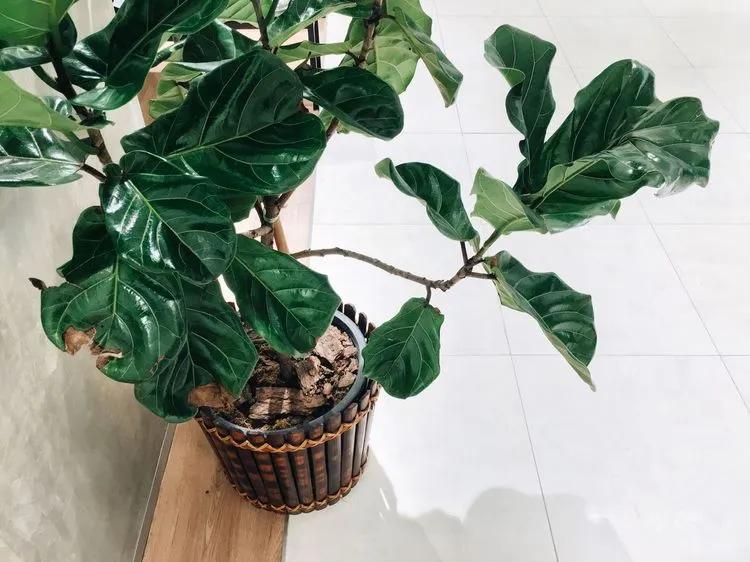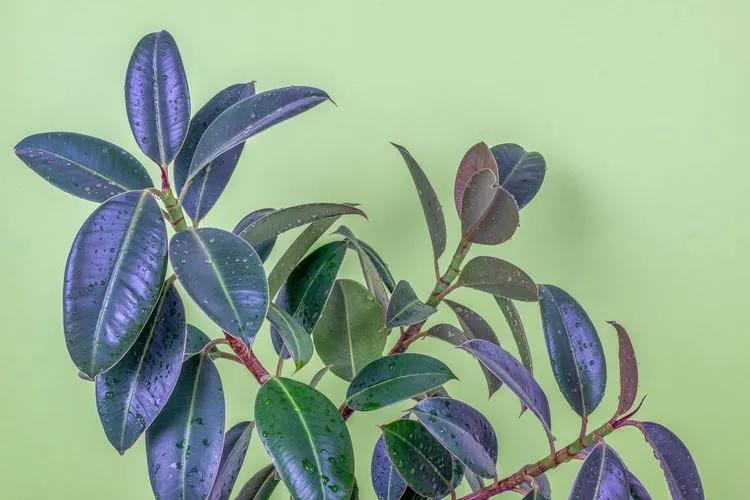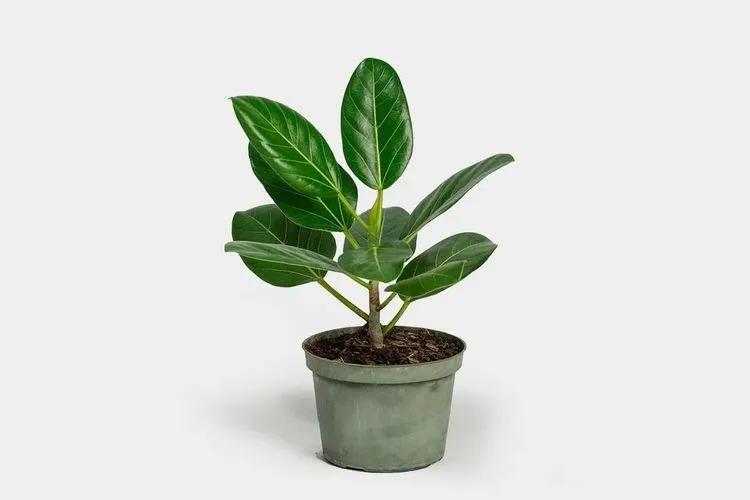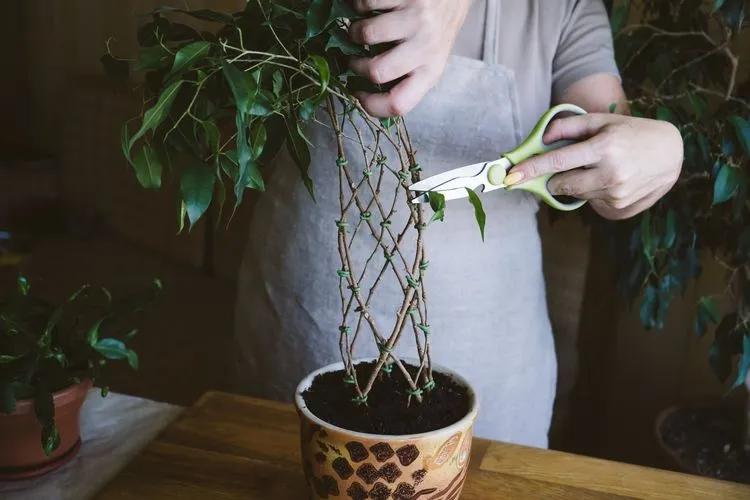Probably, every plant parent has a ficus at home, right? You can come across many varieties, but do you know there are more than 800 ficus species worldwide? They are distinctive and different, but most ficuses have one common feature: they make great indoor plants. Stay tuned to learn more about these beautiful plants.
What Are Ficus Plants?

Ficus is a genus comprising more than 800 species that occupy all possible ecological niches. Most of them are trees or shrubs, but vines and epiphytes also can be found. Tropics is the habitat of these woody plants. Ficuses are widely spread in Asia, but certain species grow in Australia, South America, Africa, and the Mediterranean. Moreover, ficuses are cultivated indoors or outdoors all over the globe.
Aerial roots are a distinctive feature of the figs. Some species, sometimes called banyan trees, spread a broad canopy supported by roots looking like trunks. These plants are also known for their toxic white sticky sap. Although all figs are flowering trees with edible fruits, none of them blooms indoors.
The most popular and well-known species of this genus is Ficus carica (a common fig plant). It was cultivated long before Ancient Greece and India. There is fossilized fruit in ancient people’s settlements dating back to 9,000 BC. Isn’t it impressive?
Popular Indoor Figs
Ficus plants come in different sizes and colors. You can find species with small or giant leaves, pink, white, or yellow variegation to your taste. Here are the most popular ones:
Fiddle-Leaf Fig

Ficus lyrata or Fiddle-leaf fig is loved for its astounding glossy leaves in the shape of the fiddle. These plants are slow growers. Nevertheless, they can reach your ceiling in several years, so you should prune them regularly to keep them compact and promote branching.
Fiddle-leaf ficus is notorious for drying tips that occur primarily due to lack of air humidity, watering issues, and drastic environmental changes. These factors are crucial for all figs, but this one is wildly cranky. All you need is to mist it regularly and water it when the top layer of the soil dries out.
Rubber Plant

Classic Rubber plant or Ficus elastica is known for its smooth leaves, but it has even more abundant cultivars such as ‘Tineke,’ ‘Burgundy,’ ‘Tricolor,’ and so on. Rubber figs are extremely easy to propagate by cuttings in a glass of water. This is relevant for all ficus plants, by the way. Unlike fiddle leaf fig, the rubber tree isn’t so picky to air humidity and thrives in bright indirect sunlight.
The plant’s name derives from its white latex that used to be the primary source of rubber. The oval-shaped pointy leaves have a rubber texture making the plant look a bit artificial in a good way.
Ficus ‘Audrey’

Ficus ‘Audrey’ (F. benghalensis) is a giant Indian Banyan. But you can grow it on your windowsill, keeping it relatively compact. This fig resembles the Rubber plant, except for the absence of pointed tips on oval leaves.
This variety is also beginner-friendly: it doesn’t require much extraordinary care. Pruning, water propagating, repotting, this plant can bear everything with pretty much success. The only thing, stay away from its toxic sap!
Weeping Fig

Weeping Fig (F. benjamina) is a way more compact than the plants mentioned above. It has tiny pointed leaves and smooth light-brown bark that tends to turn grey with age. Plenty of cultivars are available. Here is a shortlist: Kinky, Monique, Nicole, and so on.
This tree is an excellent choice for bonsai lovers. Weeping fig can grow all year round on your windowsill, unlike junipers and other outdoor bonsai trees. Fine leaves and strong aerial roots are other significant advantages of this unique species. Any ficus can be grown as a bonsai, but leaves on some species make the tree out of proportion.
Ginseng Ficus

Ginseng ficus or ficus retusa is often sold as a finished bonsai. Attractive, neat leaves put the plant in stark contrast with thick roots making the plant look miniature with the right proportions. Don’t disturb the plant too much. It can endure hard pruning, but lack of air humidity, drafts, and constant position changes stress ficus retusa a lot.
Sacred Fig

Sacred fig, Bo tree, or ficus religiosa is believed to be the tree under which Buddha attained enlightenment. This is the only deciduous ficus on this list. Sacred fig drops its leaves in fall and gets new ones in spring. Another unusual trait of this ficus is enormously long leaf tips, which look particularly decorative indoors.
Alii Fig
Alii fig or banana-leaf fig (F. maclellandii) may look like a weeping fig except for its elongated banana leaves. This species is much less popular than fiddle leaf or weeping figs. On the other hand, this variety is easier to care for since it adjusts to almost any environment.
...And More!
This was just a tiny portion of the most popular species. If you haven’t found your plant, here are some less common plants, but it doesn’t mean they are less beautiful.
- Ficus moclame (F. microcarpa)
- Ficus umbellata
- Narrow-leaf ficus (F. longifolia)
- Willow leaf ficus (F. neriifolia)
- Council tree or lofty fig (F. altissima)
- Triangle Fig (F. triangularis)
- Mistletoe Fig (F. deltoidea)
- Creeping Fig (F. pumila)
- African fig tree (F. cyathistipula)
- Moreton Bay Fig (F. macrophylla)
- Rusty fig (F. rubiginosa)
Ficuses are so diverse that it’s challenging to keep your eye on them and not get tangled up with watering and lighting requirements. We hope you enjoyed and found some interesting information about these amazing plants.
FAQ
How to Care for a Ficus Plant?
Ficus plants do best in bright, indirect light and prefer soil that dries slightly between waterings. Keep them away from cold drafts, rotate the pot for even growth, and mist leaves occasionally to boost humidity.
